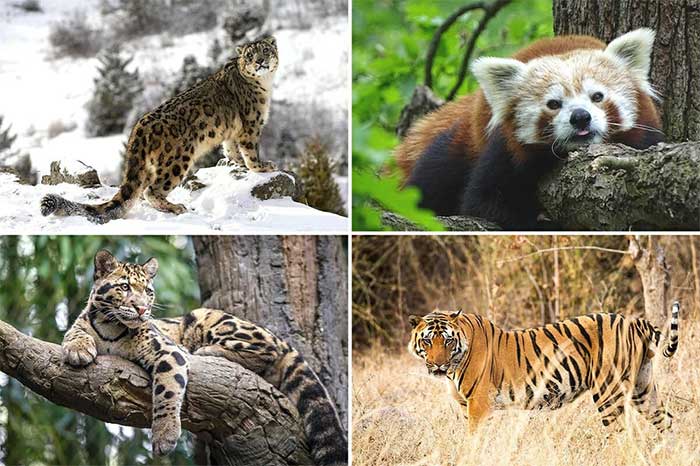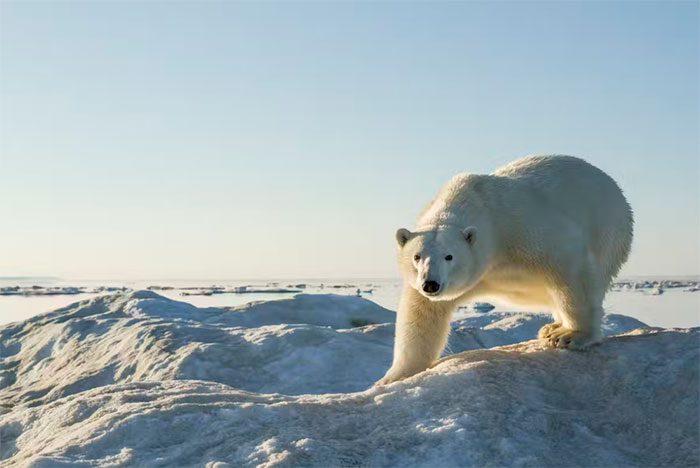Scientists investigate the optimal temperature for human and organism development, both underwater and on land.
A study published in the journal Nature indicated that as temperatures rise, human work efficiency decreases, as heat dissipation consumes a significant amount of energy. So, what is the ideal temperature for humans?

Research shows animals thrive best at 20 degrees Celsius – (Image: WILDLIFE DIARIES).
Surprising Discoveries
In an article on The Conversation (UK), scientists from the University of Nord (Norway) and the University of Tasmania (Australia) noted that while many species can survive at temperatures much colder or warmer than humans, systematic reviews of published studies revealed that the optimal temperature range for animals, plants, and bacteria living in air and water is relatively consistent, hovering around 20 degrees Celsius.
This is not merely a coincidence. For various species, the relationship between activity levels and environmental temperature is typically represented by an asymmetric curve. Biological processes increase with temperature, reach a maximum, and then decline rapidly when temperatures become too high.

Evidence shows species development peaks at 20 degrees Celsius – (Image: BEHANCE).
Recently, a research group in New Zealand found that marine species do not reach their growth peaks when residing in equatorial regions, contrary to common assumptions.
Subsequent studies indicated that the dips in growth charts related to temperature have become increasingly pronounced since the last ice age 20,000 years ago, primarily due to global ocean warming.
Moreover, the experts observed that when the number of species is plotted against average annual temperatures, there is often a noticeable decline from the threshold above 20 degrees Celsius.
Another study conducted in Tasmania (Australia) on various organisms yielded surprising results. Specifically, the team modeled the growth rates of bacteria and multicellular organisms, concluding that the most stable temperature for their biological processes is 20 degrees Celsius.
Professor Ross Corkrey from the University of Tasmania (Australia) stated that after numerous follow-up studies, the group proposed the “Corkrey model”, indicating that 20 degrees Celsius is the most stable temperature for biological molecules.
The 20 Degrees Celsius Effect

Polar Bears have evolved to thrive in extremely cold temperatures, yet they can still survive at 20 degrees Celsius – (Image: GETTY IMAGES)
The authors of the article in The Conversation continue to collaborate with colleagues from Canada, Scotland, Germany, Hong Kong, and Taiwan to seek common patterns regarding the impact of temperature on the lives of organisms. Surprisingly, in nearly every location examined, the group consistently found that 20 degrees Celsius is a critical temperature for biodiversity.
Warmer temperatures above 20 degrees Celsius lead to declines in key metrics such as tolerance to low oxygen levels in marine and freshwater species.
Metrics such as seaweed productivity, benthic organisms, predator fish ratios, plankton richness, and the presence of bottom-dwelling invertebrates and fossil mollusks all decrease negatively when temperatures exceed 20 degrees Celsius.
Simultaneously, evidence of extinction events increases in the fossil record as temperatures deviate from the 20 degrees Celsius mark.
According to scientists, the challenge for many animal species in the past was to adapt to new living conditions when their habitats became hotter or colder than 20 degrees Celsius. The body and behaviors of these animals suited the new temperature framework.
This new temperature framework extends the 20 degrees Celsius threshold upward or downward. This means that while some species have evolved to thrive in excessively hot or cold environments, they can still survive at 20 degrees Celsius.
This phenomenon is referred to as the 20 Degrees Celsius Effect.
Currently, this effect is also used to explain various phenomena such as the richness of species and genetic diversity in relation to temperature, extinction rates in the fossil record, biological productivity, optimal growth rates, and predation rates in marine environments.




















































